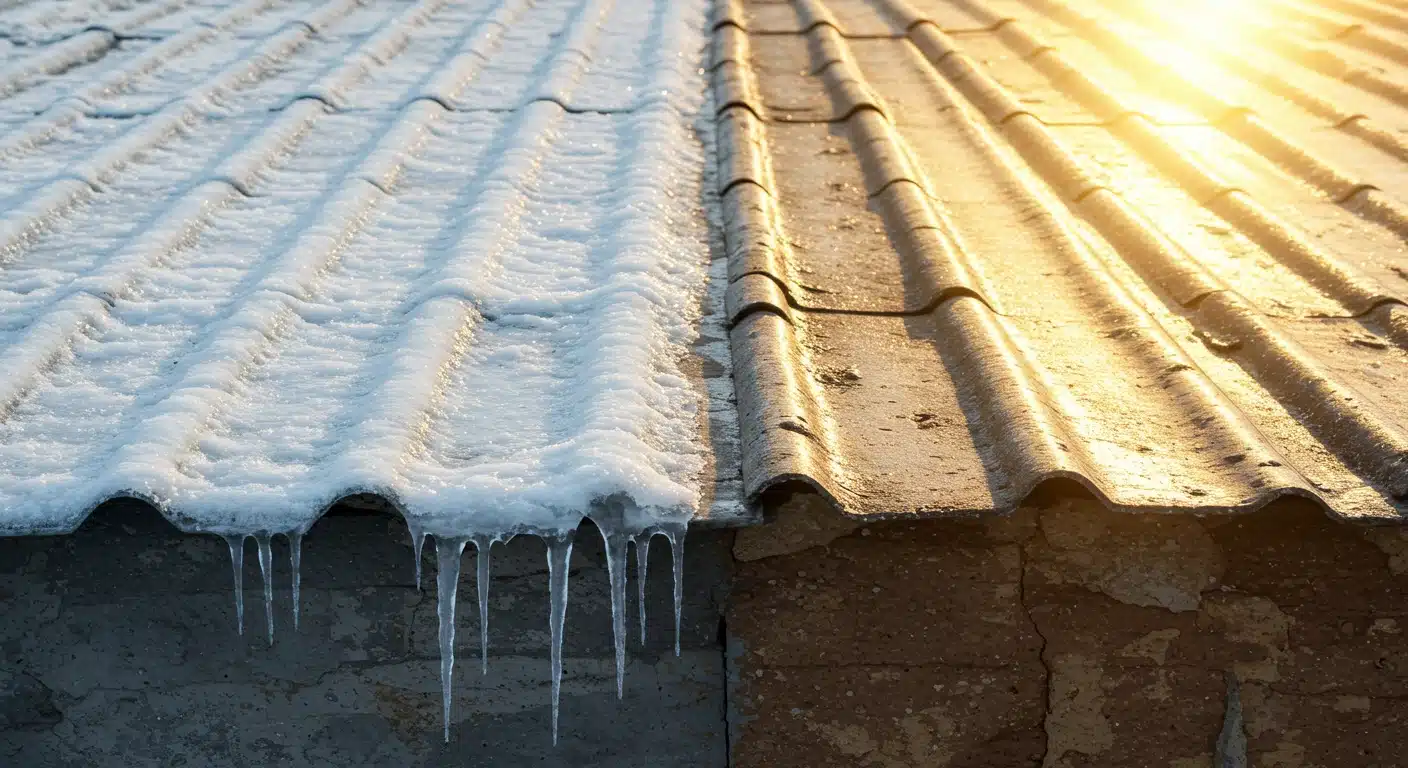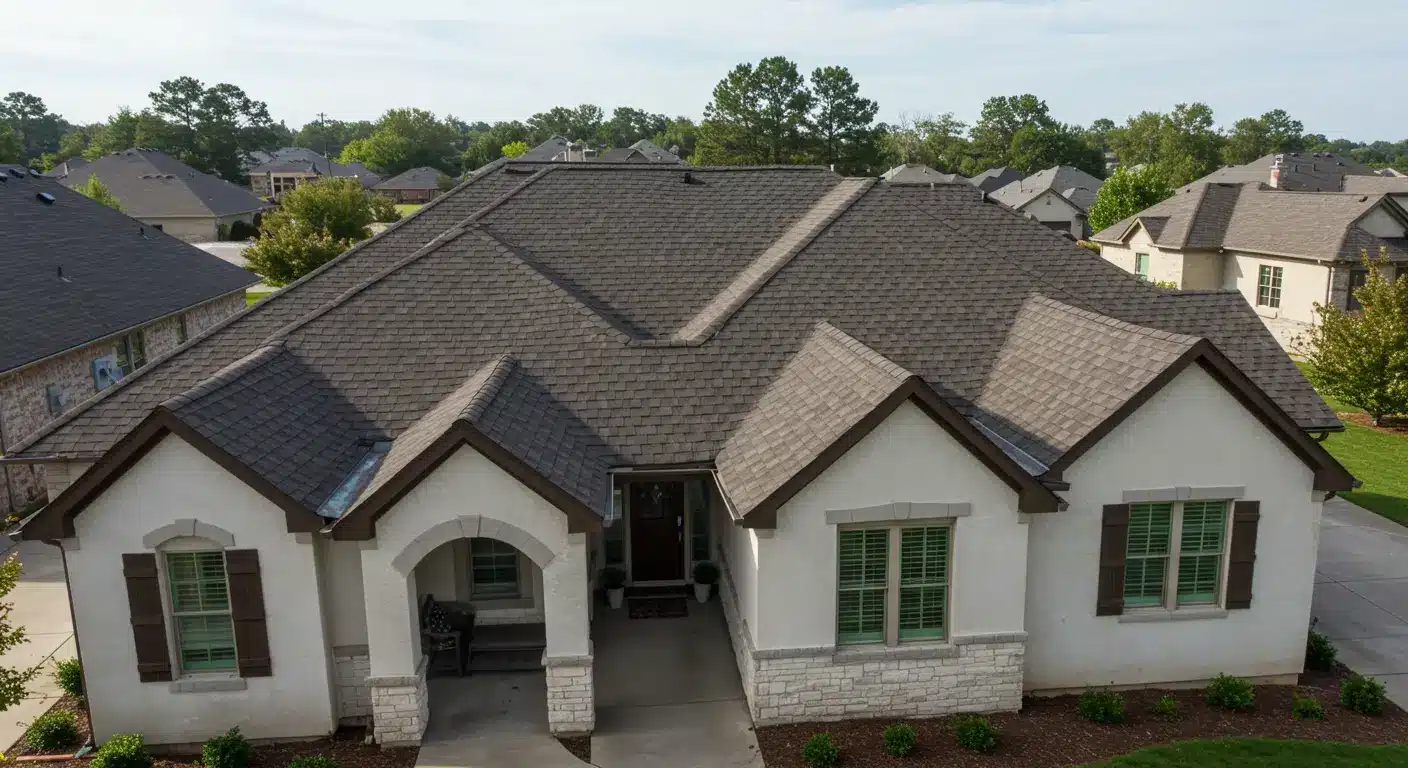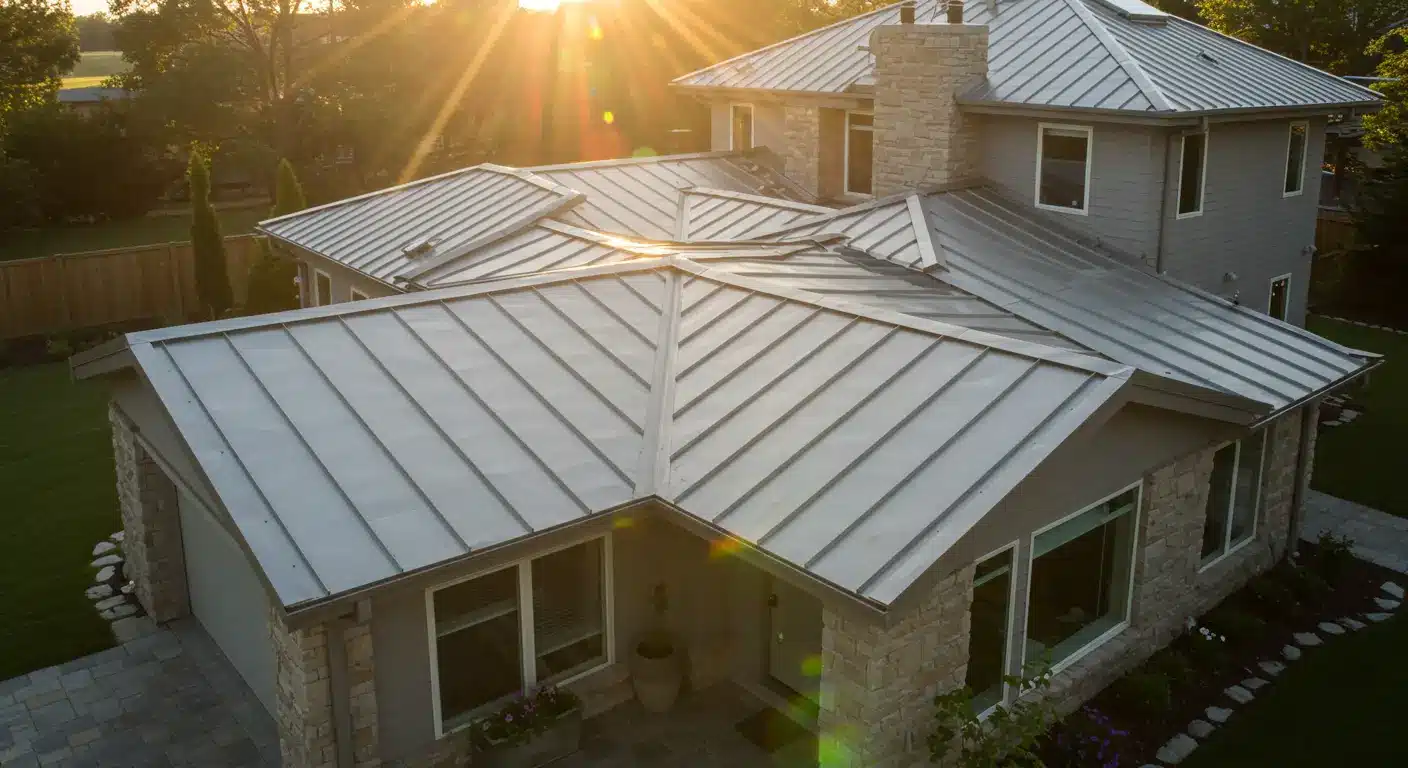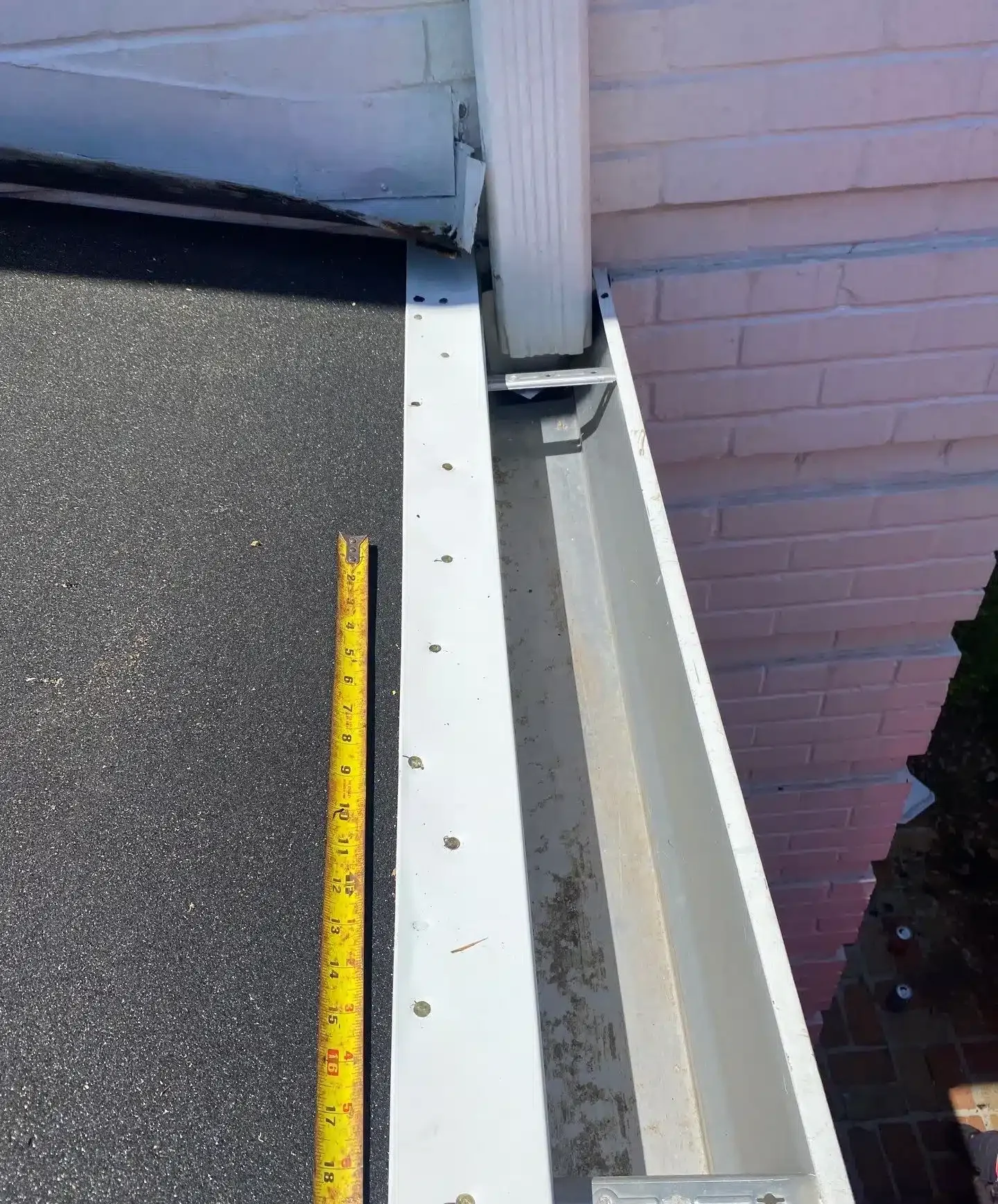Extreme temperature shifts can be hard on your roof. One moment it’s blazing hot, the next it’s suddenly cool, especially in places like Louisiana. These swings can lead to a phenomenon known as thermal shock. But what is thermal shock in roofing, and why should it matter to you as a homeowner or property manager?
Let’s break it down: from the science behind it, to the real-world impact, and most importantly, how to prevent costly roof damage.
What Causes Thermal Shock in Roofing?
Thermal shock occurs when roofing materials rapidly expand and contract due to sudden temperature changes. Roofs are constantly exposed to the elements, and when the surface heats up during the day and cools down quickly at night, or during an unexpected cold front, stress builds up in the materials.
Over time, this cycle of thermal expansion and contraction weakens the roof structure. Different materials respond to temperature differently, and seams, joints, and fasteners are particularly vulnerable.
Key contributors to thermal shock:
- Rapid temperature drops (especially after hot days)
- Poor roof ventilation
- Low-quality roofing materials
- Inadequate installation
- Uninsulated roof decks in metal systems
- UV degradation weakens materials before shock hits
Thermal shock is often overlooked because the damage isn’t immediate. It accumulates over time, eventually leading to major issues that seem to appear “suddenly.”
Learn more about material behavior at GAF’s roofing materials and expansion specs.
Roofing Materials Most Affected by Temperature Swings
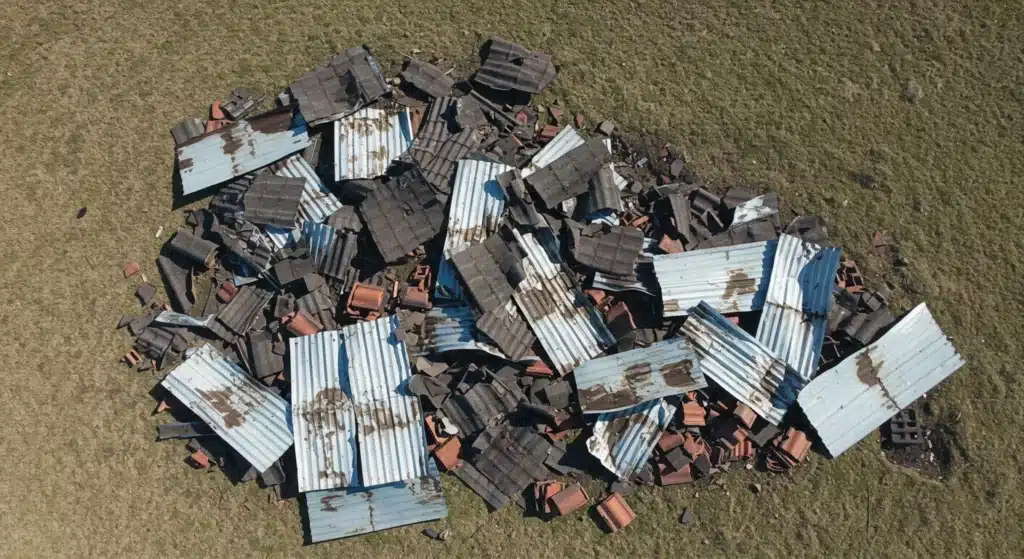
Not all roofs react the same way to thermal stress. The type of roofing material plays a big role in how it handles extreme changes.
Common materials and their vulnerabilities:
- Metal roofs: Highly conductive, metal expands and contracts significantly with heat. Without proper design, this can cause panels to warp or seams to pull apart. (Yes, thermal shock can damage a metal roof.)
- Asphalt shingles: Can crack or curl under repeated temperature stress. In Louisiana’s climate, UV exposure and humidity exacerbate this issue.
- Single-ply membranes (like TPO or EPDM): Flexible but still prone to splitting at seams or around penetrations.
- Tile roofs: Clay and concrete tiles may not flex much, making them prone to cracking if the underlayment expands or shifts.
- Modified bitumen roofs: Often used in commercial buildings, these can become brittle over time, especially with poor maintenance.
Roof systems with mixed materials, like those combining metal and asphalt components, are especially vulnerable due to different rates of roof material stress.
Real-World Examples of Thermal Shock Damage
Thermal shock isn’t just a technical term. It leads to visible, expensive, and dangerous damage.
Case Example 1: A commercial warehouse in Baton Rouge experienced persistent leaks every spring and fall. Upon inspection, it was found that the fasteners on its metal panel roof had loosened due to expansion-contraction cycles. The flashing had also cracked classic roofing damage from temperature changes.
Case Example 2: A residential customer in New Orleans called after hearing popping noises in the attic and seeing daylight through the ceiling. The culprit? A sudden cold front after a 95-degree day caused expansion in the metal sheeting, followed by rapid contraction, pulling apart seams.
Before/After Visuals: While photos can’t be shown here, it’s strongly recommended to compare your roof seasonally. If you see new cracks, shifted panels, or bubbling around seams, it’s time for an inspection.
Signs of Thermal Shock Damage on Roofs
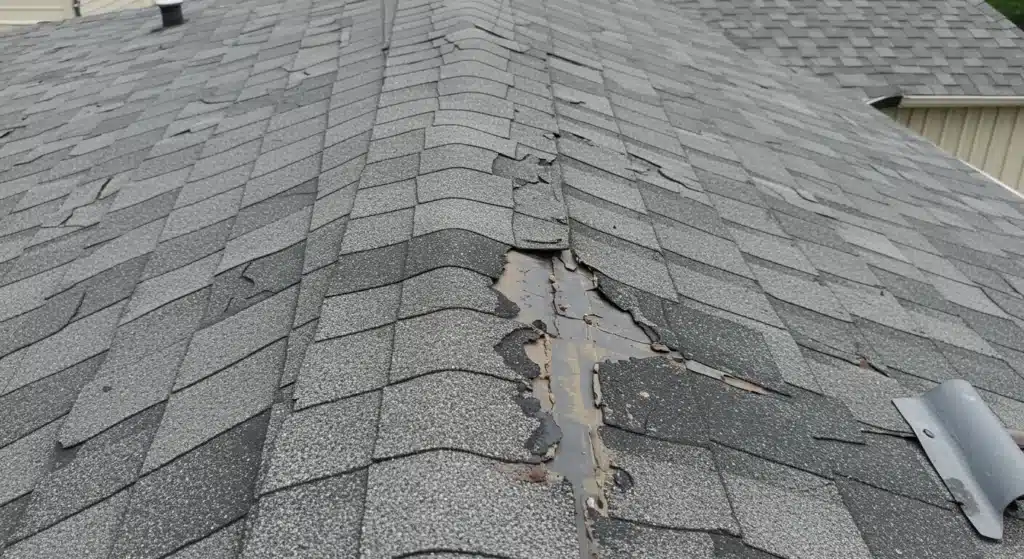
Catching thermal shock early can save thousands in repairs or even a full roof replacement. Here’s what to look for:
- Cracked flashing or membrane
- Warped or lifted panels or shingles
- Open seams or broken fasteners
- Leaks following a hot-to-cold weather shift
- Unexplained noise from expanding metal
- Moisture accumulation around seams and joints
- Blistering or bubbling roof surfaces
These signs often appear after a significant sudden temperature change, especially in climates like Louisiana’s, where the weather is unpredictable.
See more on storm damage roof repair, which often overlaps with thermal stress symptoms.
How to Prevent Roof Thermal Shock
You can’t control the weather, but you can safeguard your roof.
Steps to reduce thermal shock risks:
- Schedule regular inspections to catch issues early
- Invest in flexible, weather-resistant materials
- Ensure proper roof ventilation and insulation
- Use expansion joints in metal roofing systems
- Seal vulnerable seams and joints properly
- Consider reflective coatings to reduce heat buildup
- Choose roofing contractors familiar with your local climate
Thermal shock prevention begins with design but continues through maintenance. Prevention is always cheaper than emergency repairs. If you’re unsure where to start, book a free roof inspection with our expert team.
Why Thermal Shock Matters in Louisiana
In regions like Louisiana, where the weather can shift dramatically between hot afternoons and chilly nights, roofs are under constant pressure. This accelerates material fatigue, especially during spring and fall transitions.
Failing to act can lead to:
- Expensive emergency repairs
- Energy inefficiency due to roof gaps
- Shortened roof lifespan
- Insurance complications due to neglect
- Reduced property value
Whether it’s a residential home or a commercial building, thermal shock is a threat you can’t afford to ignore.
How Lone Wolf Roofing Can Help
At Lone Wolf Roofing, we specialize in diagnosing and repairing damage from roofing damage from temperature changes. We understand Louisiana’s climate and how it affects different roofing systems.
We offer:
- Thorough inspections
- Repairs tailored to thermal stress damage
- Full roof replacement options when necessary
- Support with insurance claims and emergency response
Our team stays ahead of local weather patterns and uses materials proven to resist thermal expansion and contraction. Don’t wait until the damage becomes obvious. Get ahead of it today.
👉 Book a Free Roof Inspection Today
FAQs About Thermal Shock in Roofing
What causes thermal shock in roofing?
Thermal shock is caused by rapid temperature changes that force roofing materials to expand and contract quickly, creating structural stress and eventual damage.
Can thermal shock damage a metal roof?
Yes. Metal roofs expand and contract more than many other materials. Without proper design and installation, thermal shock can warp panels and break seals.
How do you prevent thermal shock on a roof?
Prevent thermal shock by using flexible materials, adding expansion joints (especially in metal roofs), ensuring proper ventilation, and scheduling regular inspections.
What are the signs of thermal shock damage on roofs?
Cracks, lifted shingles, leaks after sudden cold snaps, and popping sounds from expanding metal are common signs. Get your roof checked after extreme weather.
Is thermal shock covered by insurance?
It depends on your policy. Some insurers classify it as wear and tear, while others cover it if it results from a storm. A free roof inspection can help document the cause.
Are commercial buildings more at risk?
Yes, especially those with large, flat roofs and metal systems. Commercial roofs often lack insulation and are more exposed, making them more susceptible to thermal movement.
Can thermal shock lead to emergency roof repairs?
Absolutely. If ignored, thermal shock can lead to sudden leaks or structural failure, especially after storms or temperature plunges.
Protect your roof from thermal shock.
For reliable help and trusted advice, turn to the experts at Lone Wolf Roofing. We’re here for both residential and commercial roofing needs in temperature-fluctuating regions.
Learn more from the National Roofing Contractors Association or explore our roof replacement guide to stay informed.

